-
The Oldest Main Hall in Obama
Myorakuji Temple is located at the foot of Mt. Tadagatake, to the southwest of Tadaji Temple. Like Tadaji, it is believed to have originally been established in the eighth century. Legend says that Myorakuji was founded in 719 by Gyoki (668–749), a prominent traveling monk, who carved the temple’s first principal object of worship. Kukai (Kobo Daishi, 774–835), the founder of the Shingon school of Buddhism, supposedly restored the temple in 797. The current main hall at Myorakuji was rebuilt in the Kamakura period (1185–1333) and is thought to be the oldest in Obama.
After paying the entrance fee, follow the approach to the temple gate. The path is filled with lush greenery in spring and summer, which turns into magnificent, fiery colors in autumn. Crossing the vermilion bridge over a murmuring stream will take you to the gate, where you will see a large plaque that reads “Daihikaku” (“the pavilion of great mercy”) above the entranceway. This generally indicates a temple dedicated to Kannon, the bodhisattva of compassion. On both sides of the gate are statues of Nio guardians, painted vivid red with gold decorations. Take a closer look at the powerful, rugged physique of the deities and sense their formidable strength.
As you walk further, you will see the temple’s main hall bathed in light, seemingly floating at the end of a tunnel of greenery. The hall is relatively small, with a hipped roof thatched with cypress bark, but it is elegant and peaceful, allowing visitors to forget the hustle and bustle of the city. -
-
 The approach to the temple gate
The approach to the temple gate -
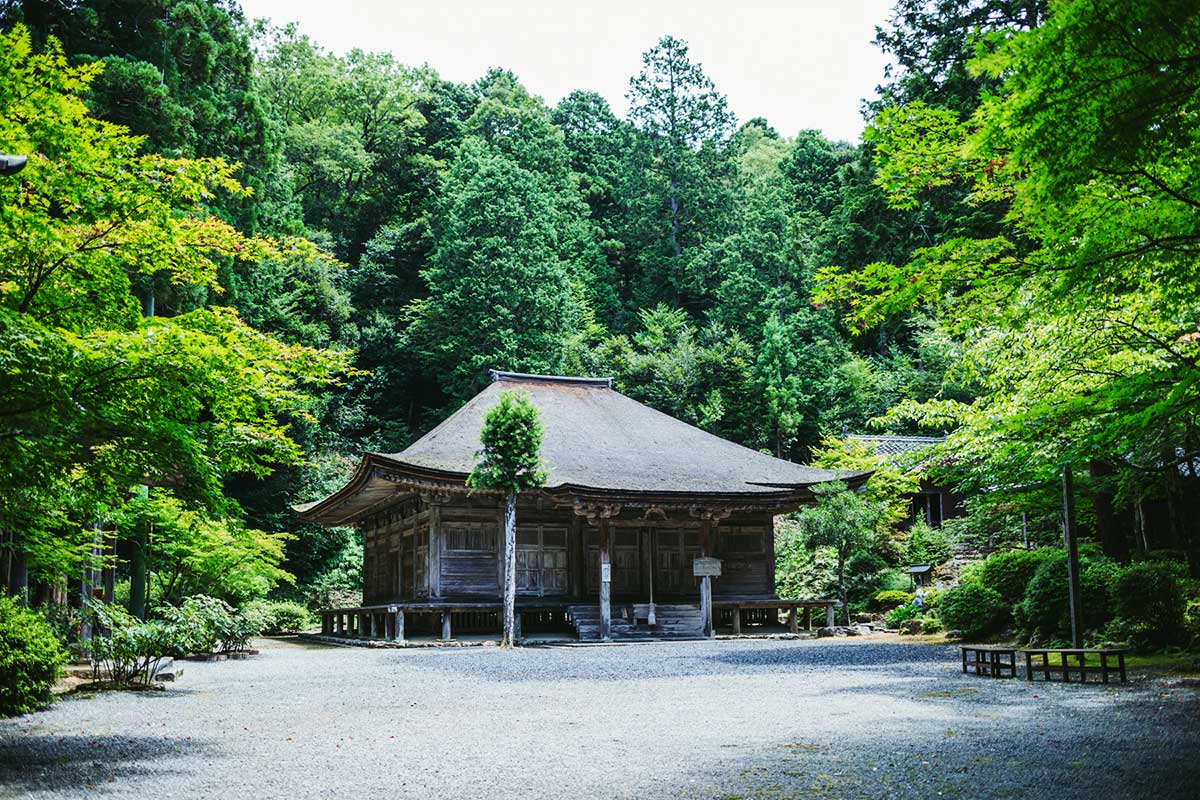 The main hall bathed in light
The main hall bathed in light
-
-
A Golden Thousand-Armed Kannon and Colorful Heavenly Kings
Entering the main hall reveals that Myorakuji has just as many Buddhist statues as the nearby Tadaji Temple. Please pay your respects in the outer sanctum of the hall before proceeding to the inner sanctum to admire the sculptures from up close.
The principal object of worship at Myorakuji, a standing statue of the Twenty-Four-Headed Thousand-Armed Kannon, is said to have been created in the Heian period (794–1185). Despite its great age, the gold foil that covers its surface is still largely intact. This is explained by the fact that the statue was kept protected from sunlight and incense smoke and displayed to the public only once every 33 years until the early twentieth century. In addition, there is very little damage to the statue itself, even the delicate hands and fingers, which contributes to its divine presence.
The statues of the Four Heavenly Kings to either side of Kannon likewise retain their color, with faces in blue and red and eyes glittering. Seeing the sculptures painted in such clear and vivid hues, consider all of the other Buddhist statuary you have encountered on your journey. It becomes apparent that the atmosphere of Buddhist temples was very different in the past compared to how we experience them now. -
-
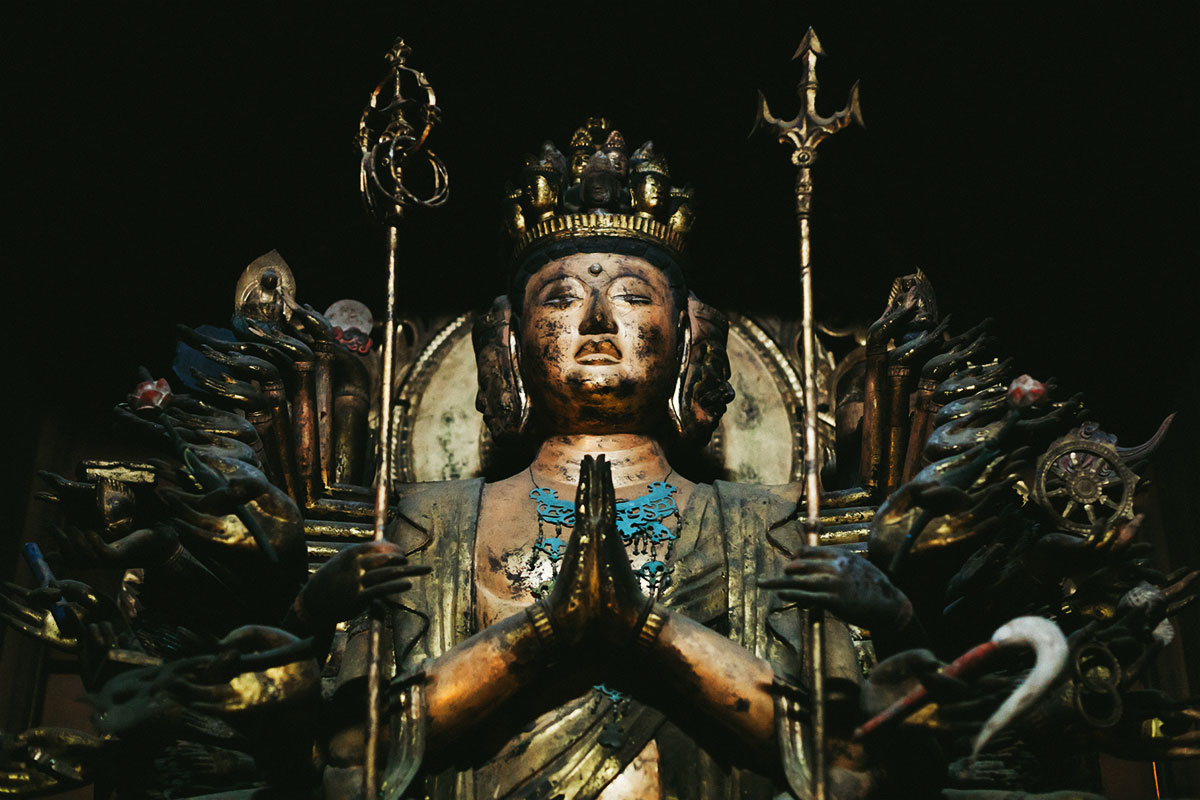 Standing statue of the 24-faced, Thousand-armed Kannon (Avalokitesvara Bodhisattva)
Standing statue of the 24-faced, Thousand-armed Kannon (Avalokitesvara Bodhisattva) -
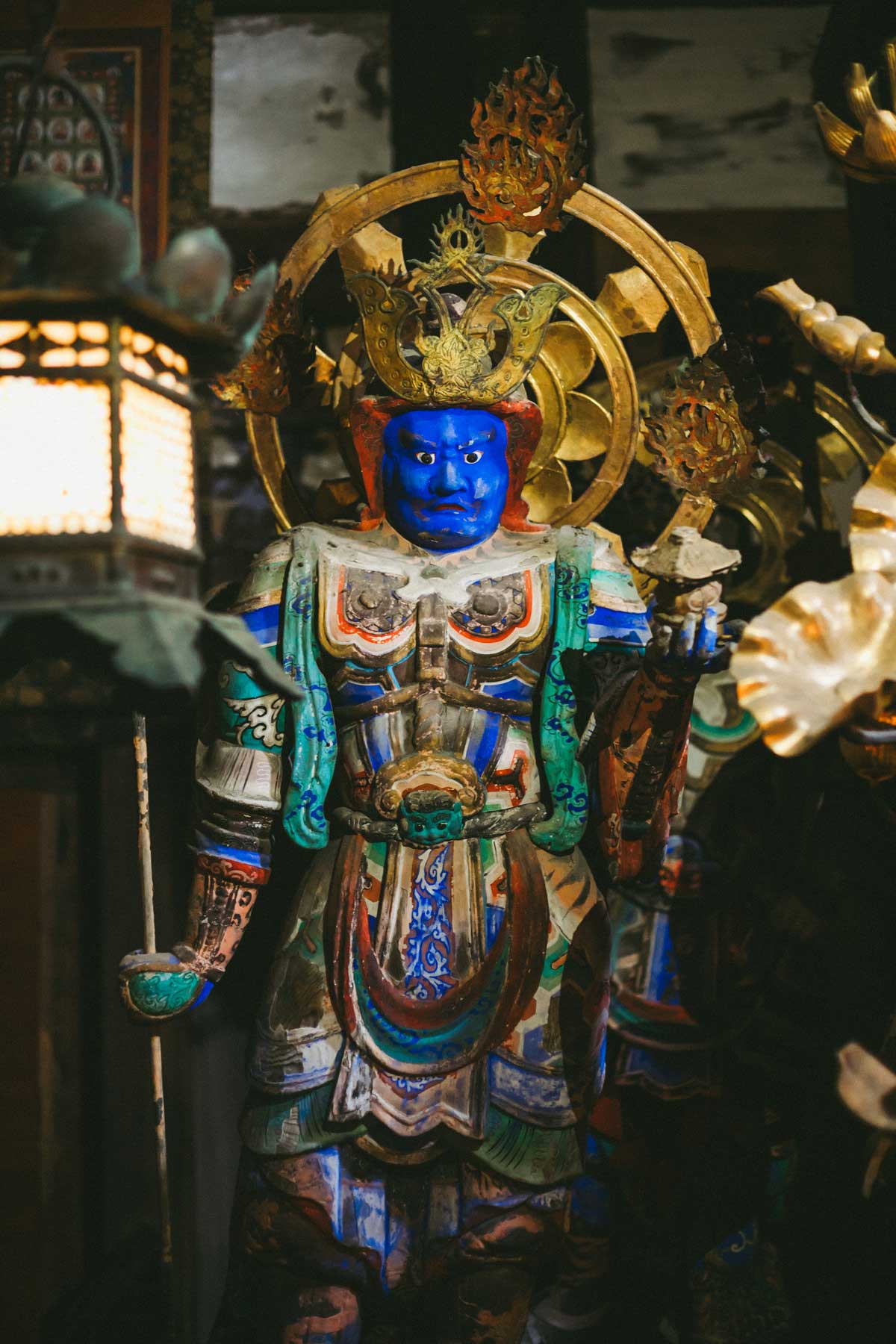 Statues of the Four Heavenly Kings retain their vibrant colors
Statues of the Four Heavenly Kings retain their vibrant colors
-
-
Continuing to the Rear Sanctum
To the right of the principal object of worship is another standing statue of Kannon, also believed to have been carved in the Heian period. The flowing lines of the robe that covers the body of the bodhisattva are very beautiful, and the precise carving technique is remarkable.
From the inner sanctum, feel free to go around the back to the rear sanctum. In general, only the chief abbot is allowed into a temple’s rear sanctum, though some temples will make exceptions: for example, Todaiji in Nara permits visitors to explore the entire main hall and see the Great Buddha from all angles. However, many temples in Obama allow people to enter the rear sanctum, which is a very valuable experience. -
-
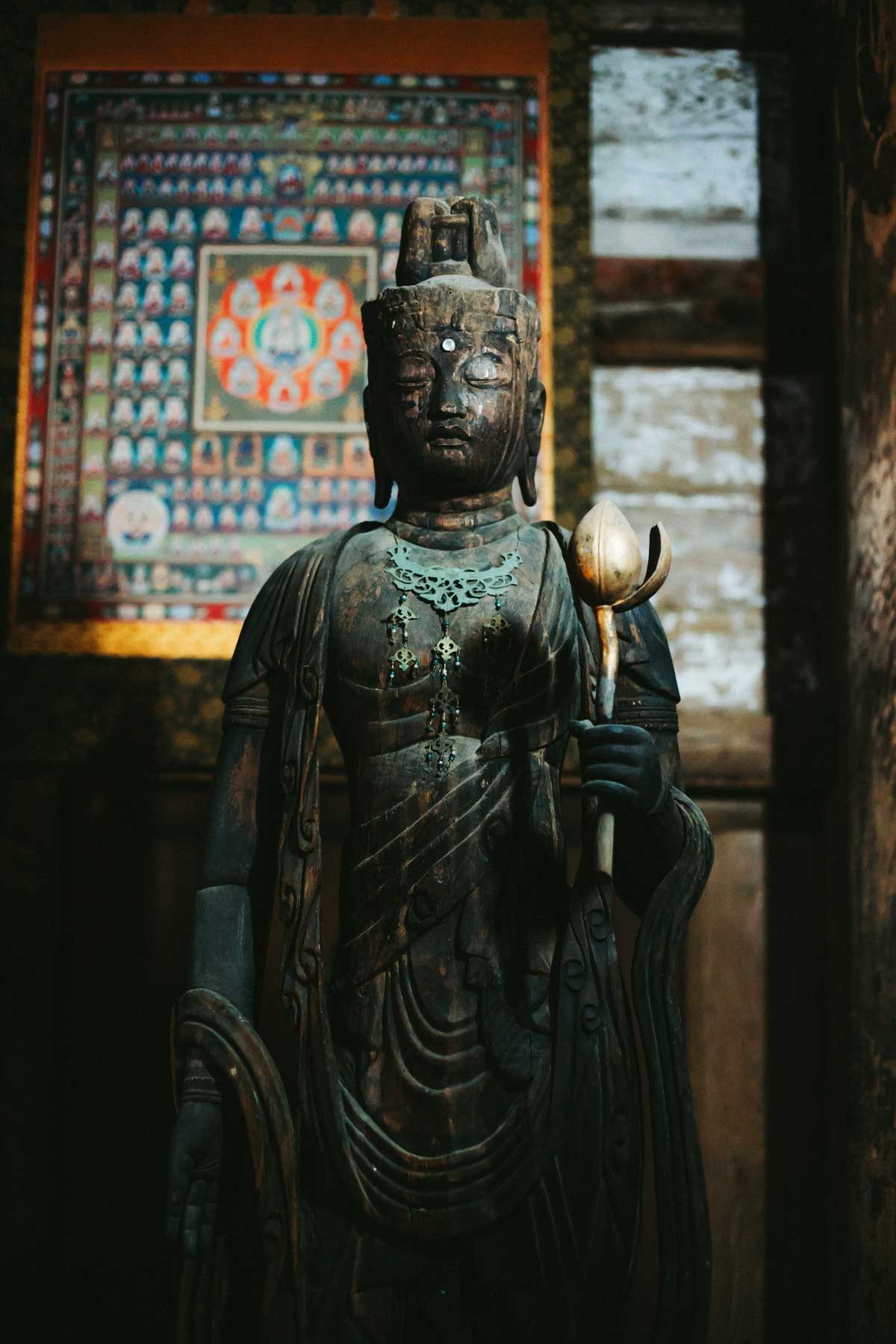 Standing image of Kannon Bosatsu (Avalokitesvara Bodhisattva)
Standing image of Kannon Bosatsu (Avalokitesvara Bodhisattva)
-
-
Jizo Bodhisattva, the Guardian of Children
After looking around the main hall, pay a visit to the Jizodo Hall on the left. You are not permitted to enter, but after paying your respects, you can peek inside through the wooden lattice. With a large golden statue of Jizo Bodhisattva enshrined in the center and the walls covered with a thousand miniature figures of the same deity, the sight leaves a powerful impression. Jizo is regarded as a protector of children, and there are many votive tablets hanging outside the hall with such prayers as, “May you grow up healthy.”
Similar to Tadaji Temple, Myorakuji is a place that has been protected by many generations of people in Obama. When you realize how difficult a task it must have been to maintain these temples over the centuries, your hands will naturally come together in awe and prayer. -
-
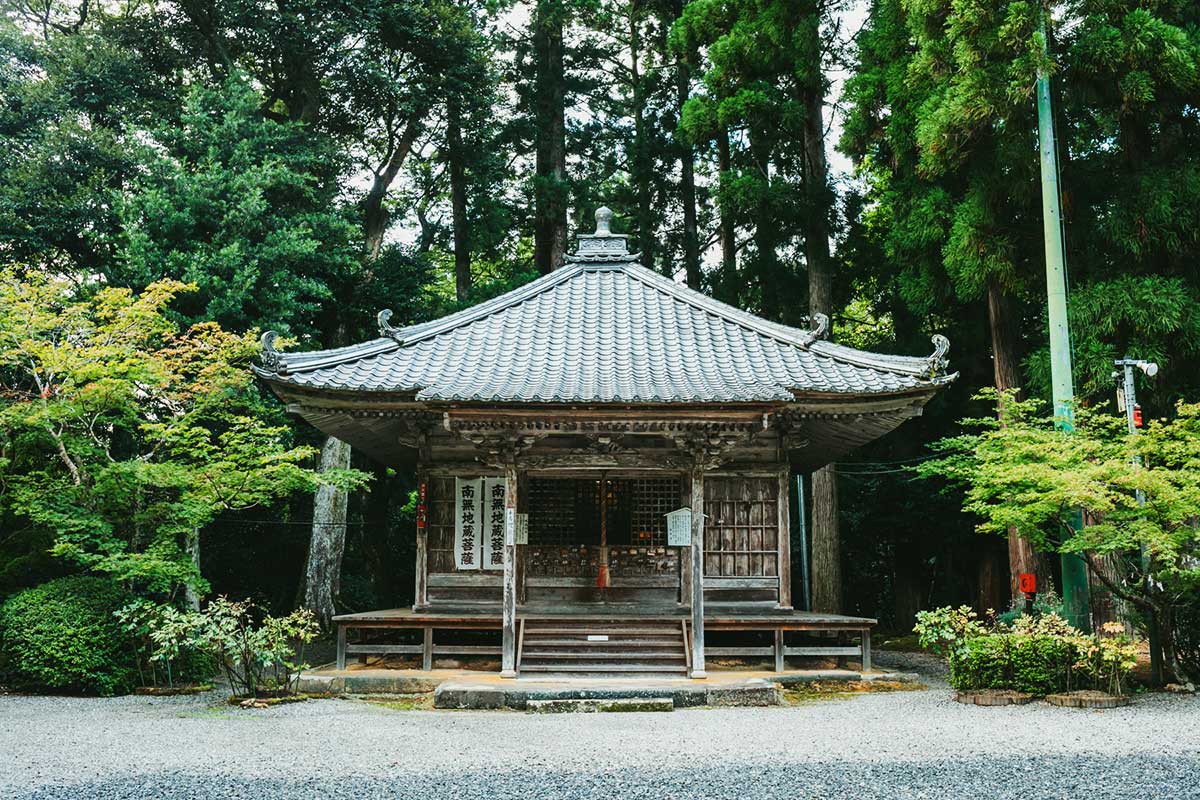 Jizo Hall on the left of the main hall
Jizo Hall on the left of the main hall
-
